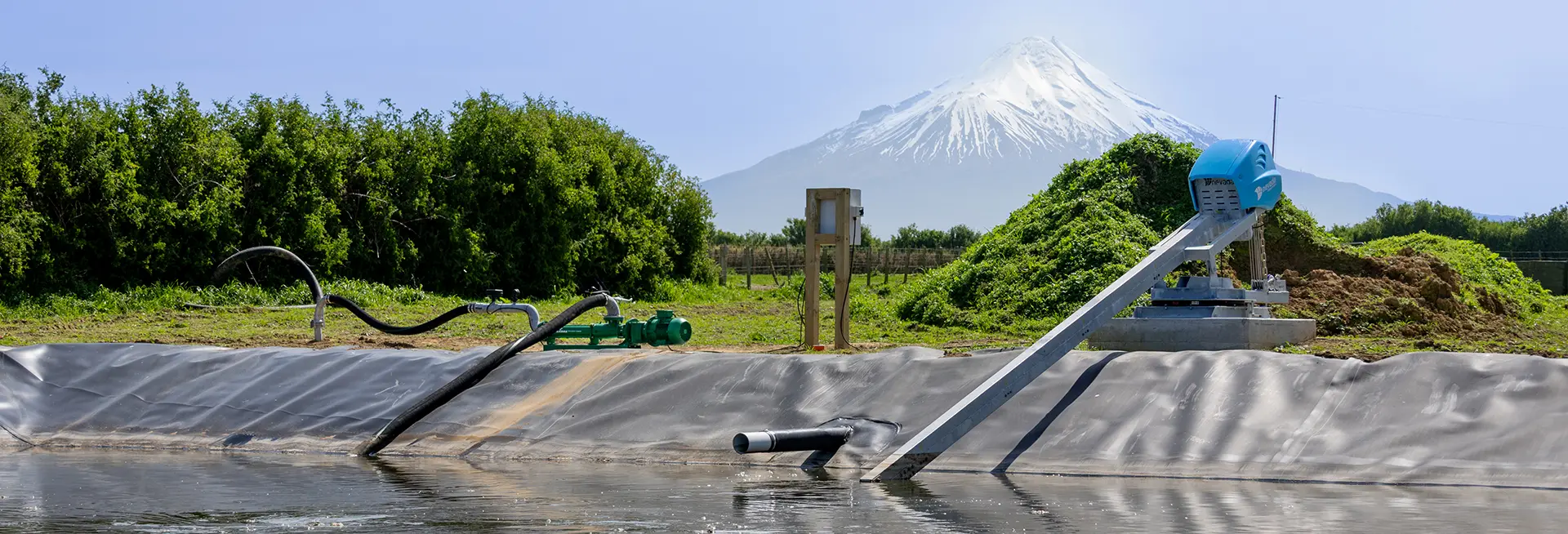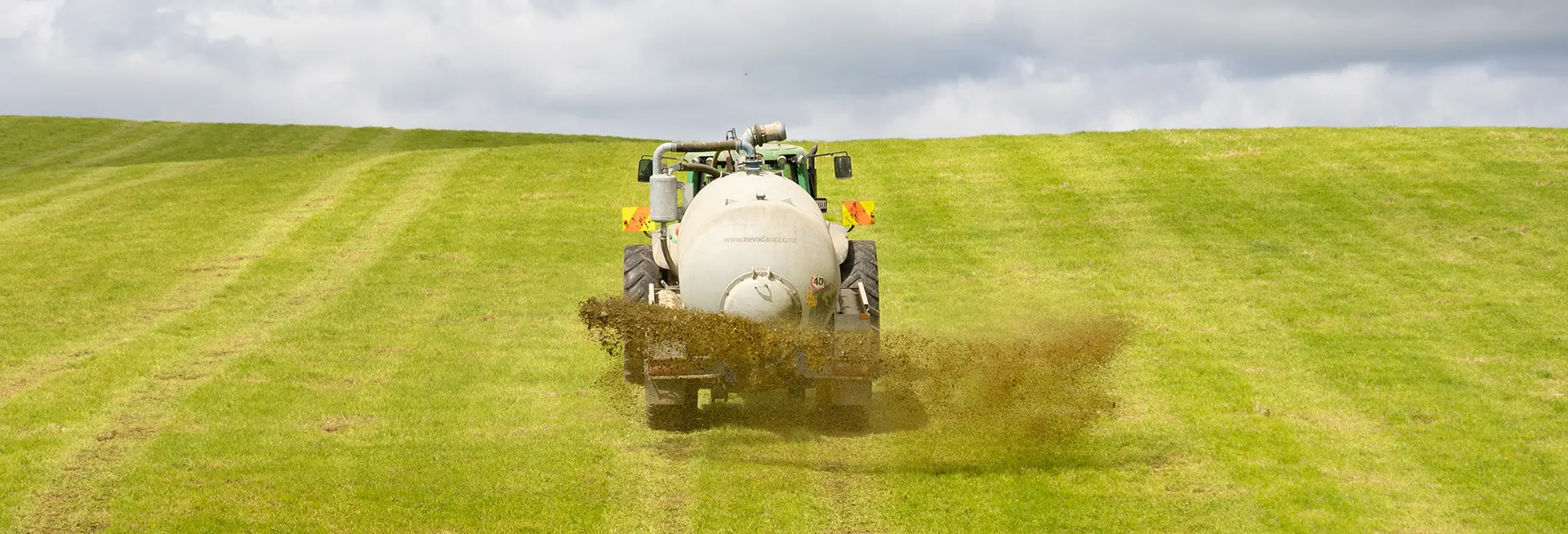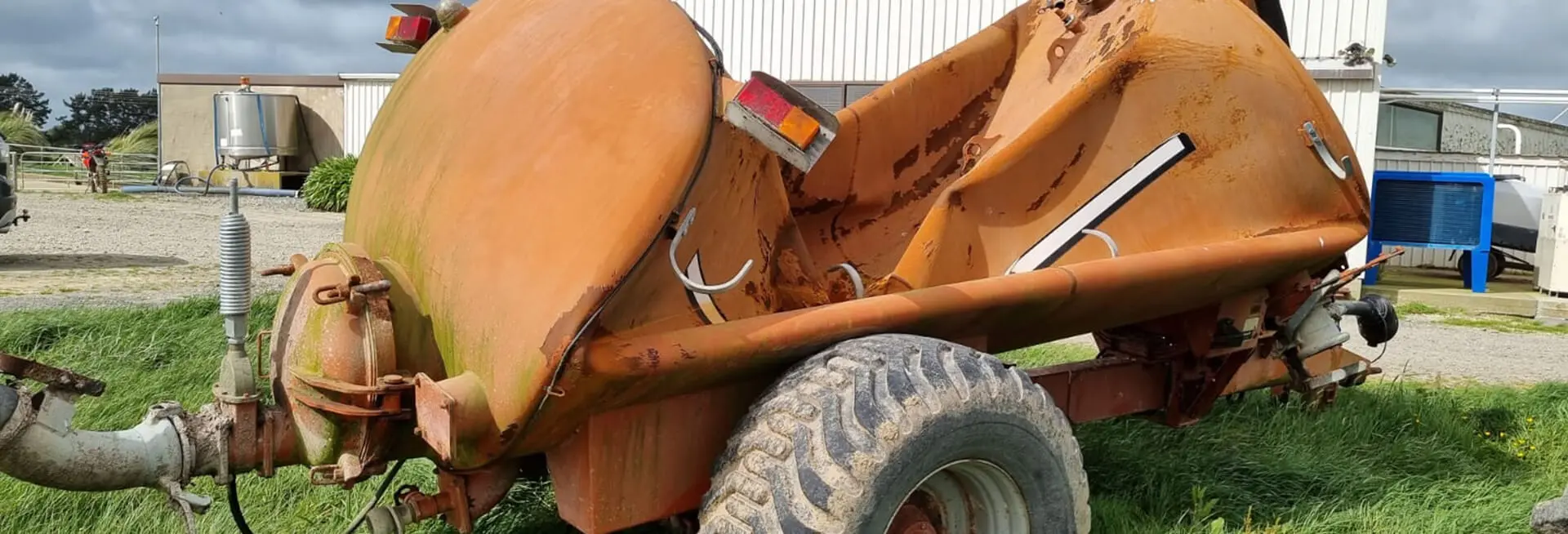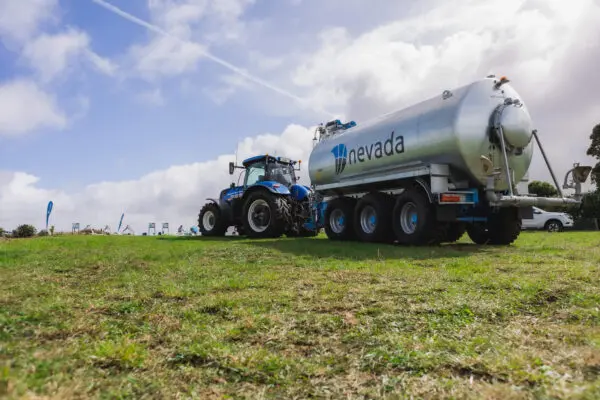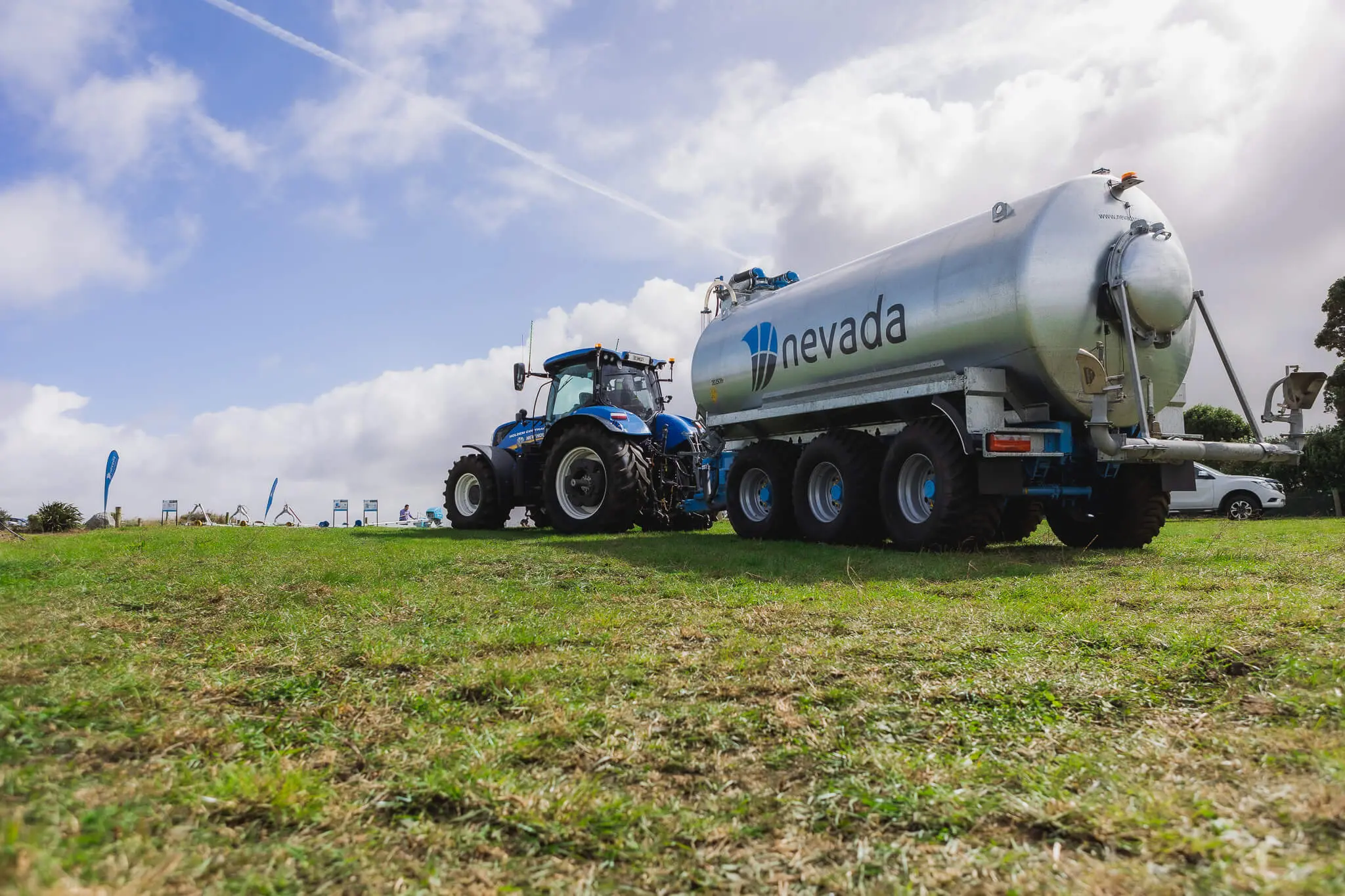Here, we discuss what is an effluent pond, what is an effluent pump used for, and explore some of the factors to consider when installing a pond and a pump on your property.
All states and territories have minimum standards that dairies must comply with in regard to effluent, including legislation, codes of practices, guidelines and planning provisions to prevent any adverse impact from dairy effluent making it more important than ever for farmers to have a robust effluent management system in place. The good news is that once you have implemented best practice techniques, you’ll turn your waste into a valuable resource that delivers good returns. You can feed your farm with nutrients and reduce your dependence on artificial fertilisers.
What is an effluent pond?
If you are new to farming, you may be asking what is an effluent pond? Effluent ponds are storage systems designed to collect and store the liquid waste produced in your dairy sheds, feedpads, and other farm facilities. These ponds serve as the central hub of your nutrient management system, temporarily holding effluent until you can spread it on your paddocks.
The regulations surrounding effluent management differ widely across Australia. The specific rules around storage capacity, application rates, and setback distances from dairy sheds and waterways will vary from state to state. Understanding what is an effluent pond and what these requirements are will save you a nightmare later on.
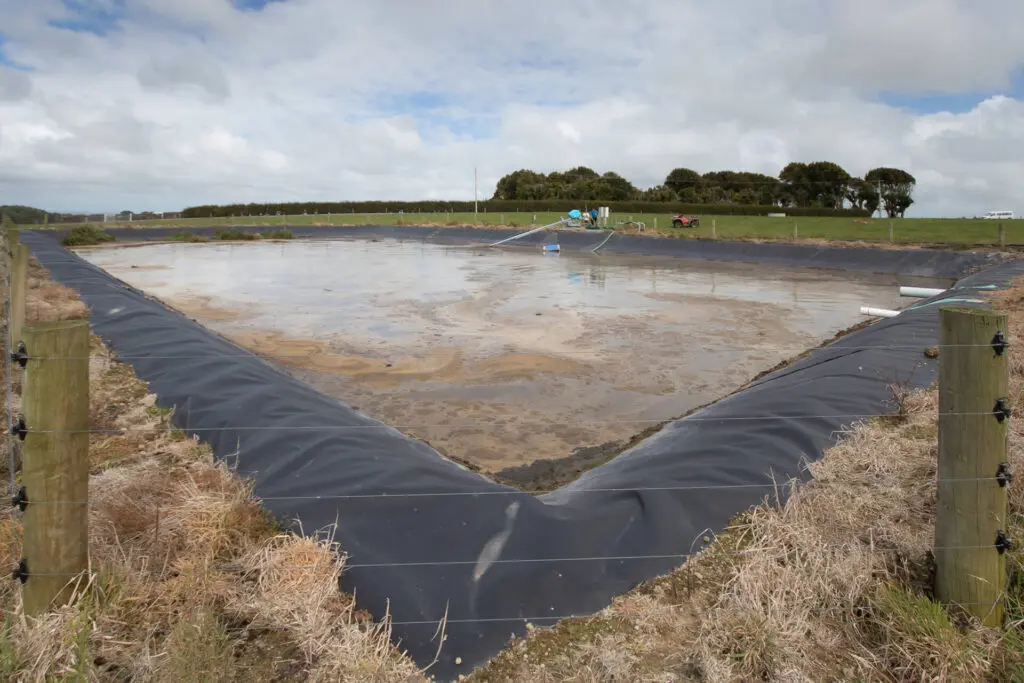
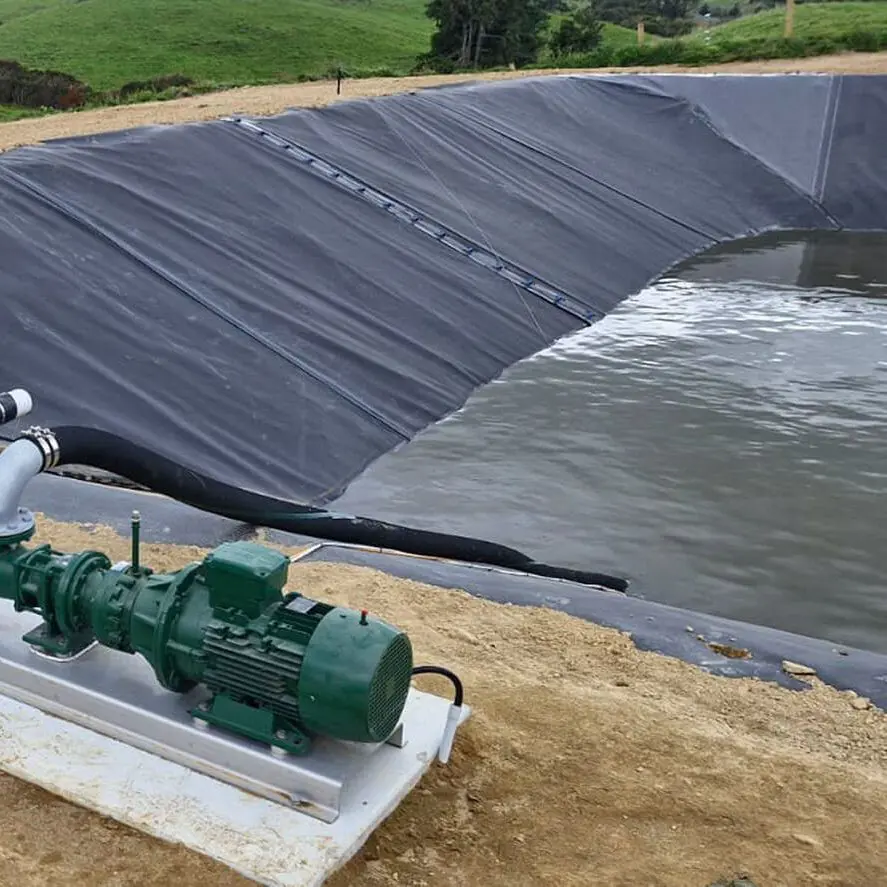
Effluent Pond Design & Setup
Careful pond design is your crucial first step for effective effluent management. Your ponds must be sized to handle not just daily effluent production but also cope with sudden downpours and provide adequate storage through bad weather when you can’t get out to apply the effluent on your paddocks.
What Size Pond Do You Need?
They can range in size from 500,000 litres to 6,000,000 litres. How big it needs to be is dependent on your herd size and the topography of your farm. On average, one cow produces 50 litres of effluent per day, so for instance, a 350-cow herd will produce 17,500 litres of effluent per day. However, the larger the pond, the larger its footprint and rain catchment area. It is often good practice to go deeper and have a smaller footprint.
Placement Of Your Effluent Pond
Ideally, you want it to be placed at a location lower than your dairy, so you can use gravity to move the effluent to the pond; otherwise, you will need a pump. There are also specific requirements from milk supply companies regarding setbacks from the dairy, as well as regulations for distances from waterways and neighbouring properties. Consider prevailing wind directions to minimise odour impacts on neighbours and your own facilities. Working with an accredited designer like Nevada will help you make all those decisions.
Safety
It is good practice to fence in your pond to protect animals, children and farm workers from stumbling across the pond. Ponds can form a crust where vegetation grows and this creates an illusion of a solid surface. Keep control of the vegetation around the edge of the pond by mowing or using herbicides.
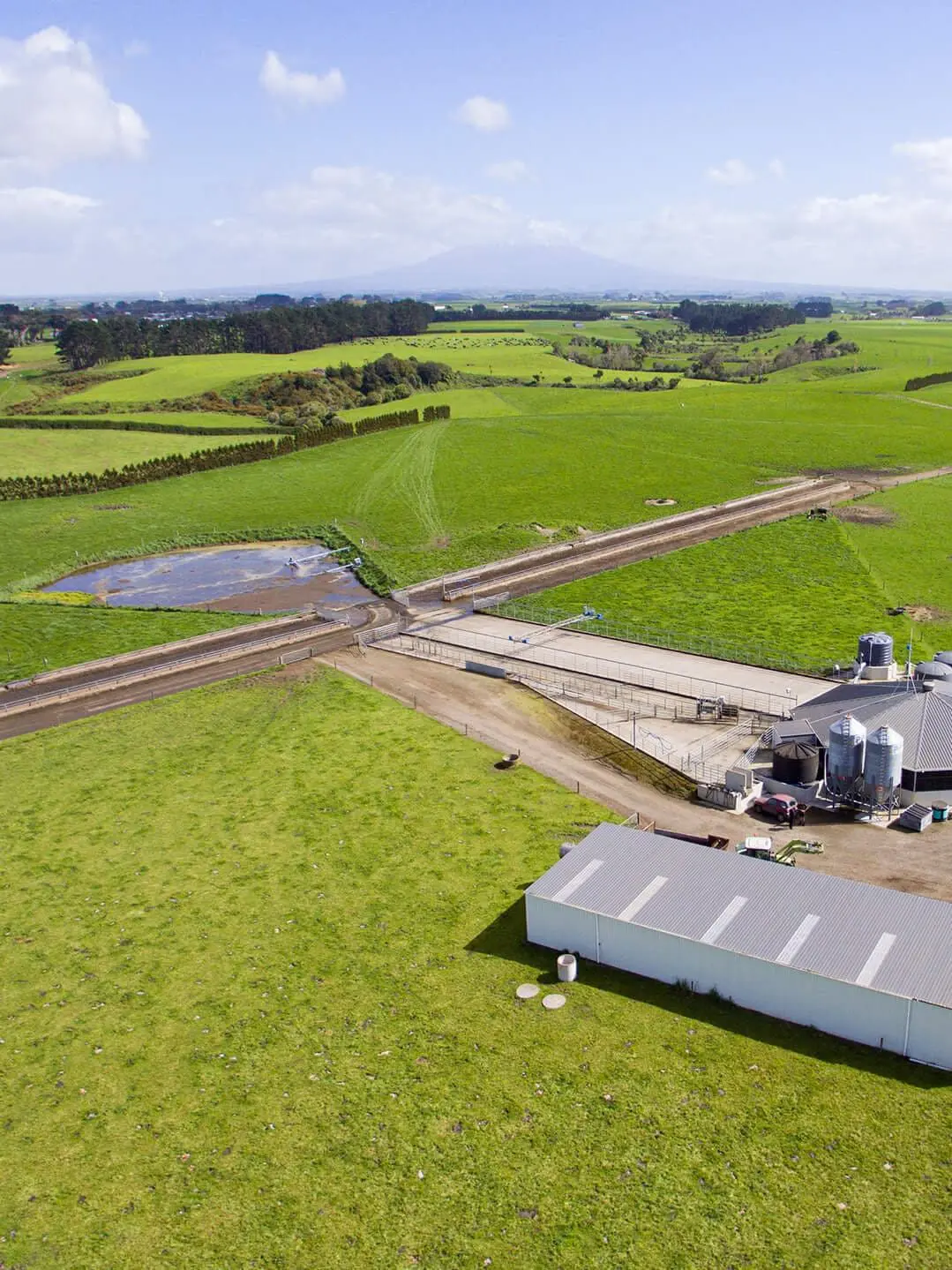
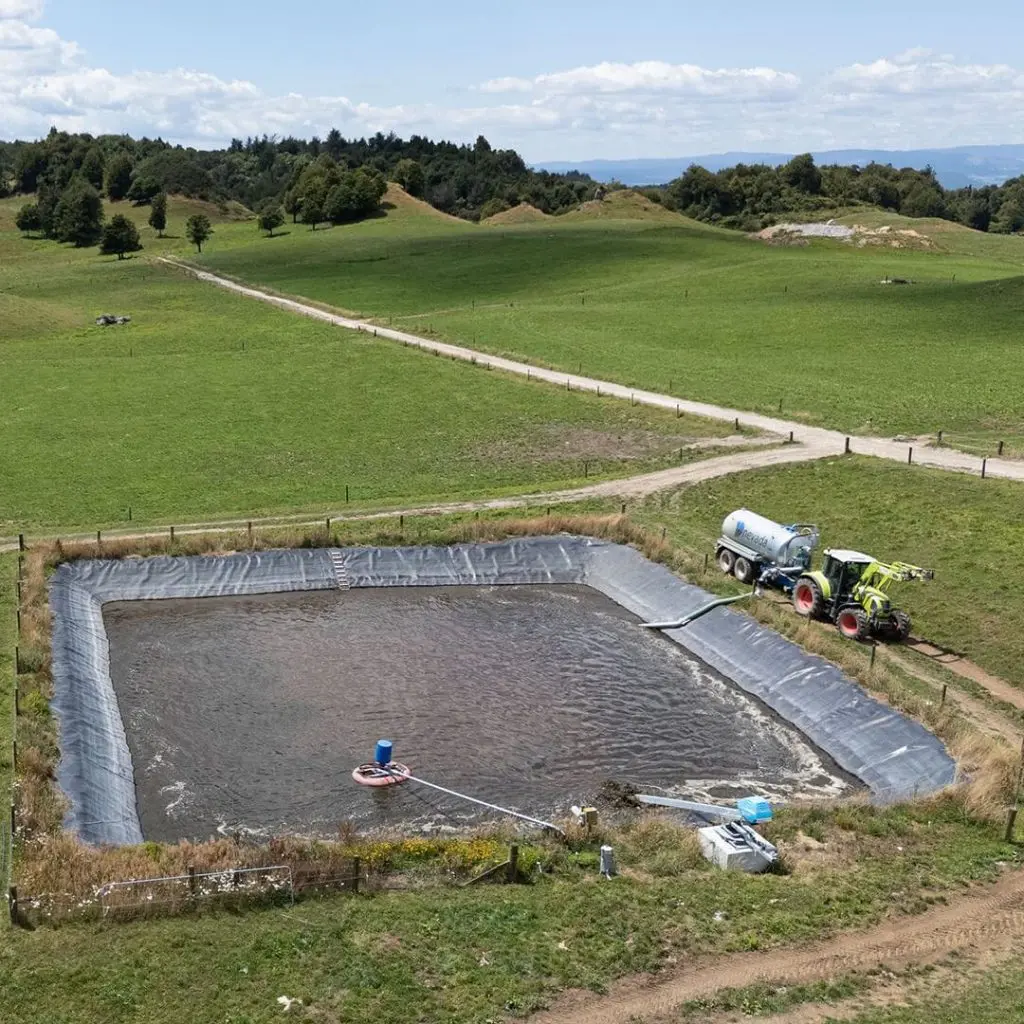
Choosing a Pond Liner
High-density polyethylene plastic (HDPE) pond liners give you the biggest and most secure range of options. This is a tough, high-strength material available in a wide range of sizes, depths, and shapes, and is compliant with environmental and regional regulations. HDPE liners are preferred over rubber because the seams are welded together, ensuring longevity. A rubber-lined pond is more likely to use adhesives to join the seams. HDPE liners are customisable to your terrain and circumstances. You can choose from several factors, including geomembrane density, tensile strength, UV durability, and chemical resistance, to find the perfect liner for your topography.
Managing Effluent Pond Levels
It is important to manage the level of your pond. If left too long and the level rises too high, this can potentially lead to expensive problems if you are caught off guard by a sudden downpour or a malfunction in your pump. Getting contractors in to empty your pond is also expensive. You will get better value out of your pond by spreading fresh and a little, and often. Before you get into busy periods on the farm, like calving time or before winter, you want the level to be as low as possible. In winter, there are fewer opportunities to spread because of the wet weather. A low level at this time will give you some wiggle room.
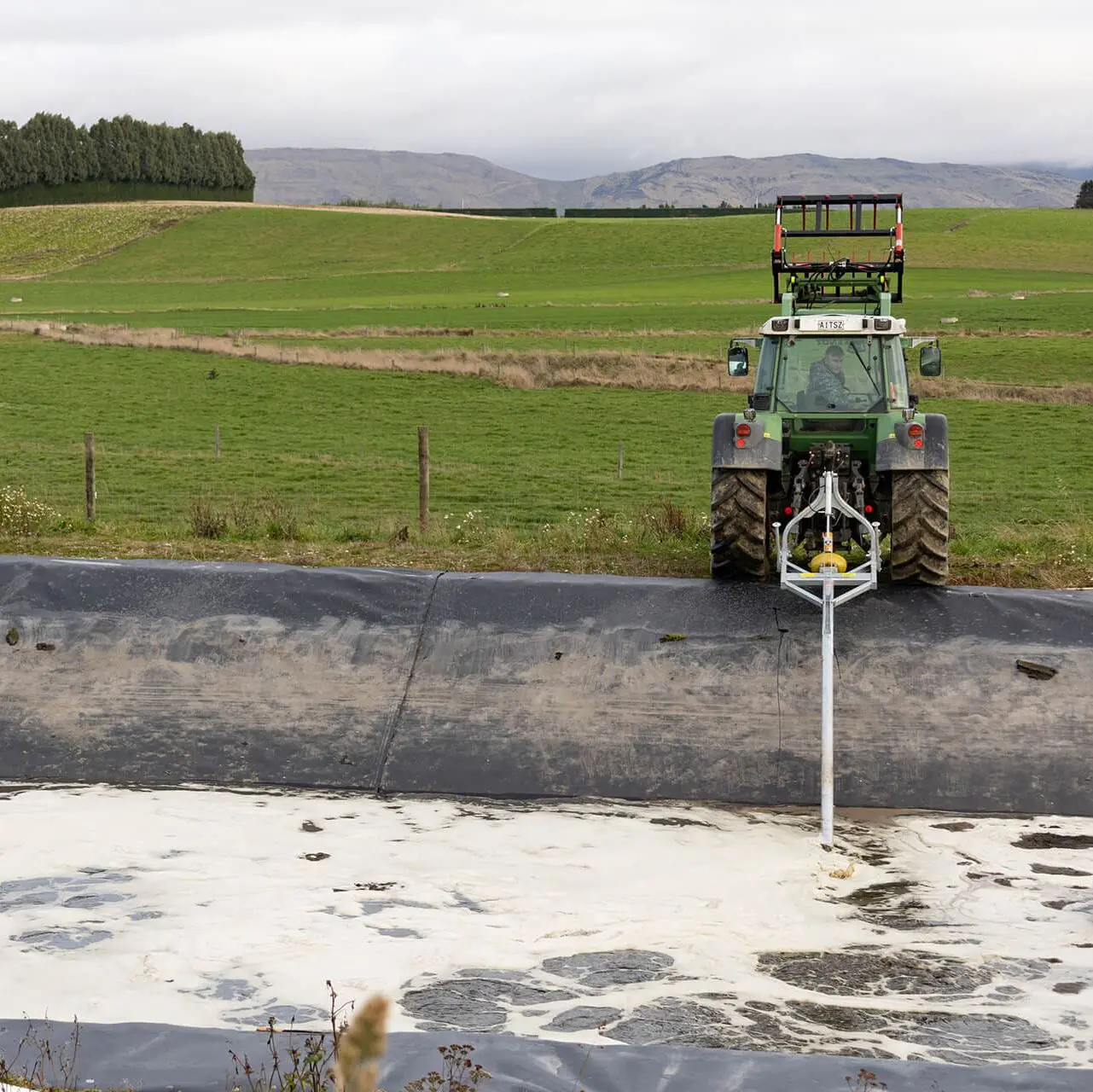
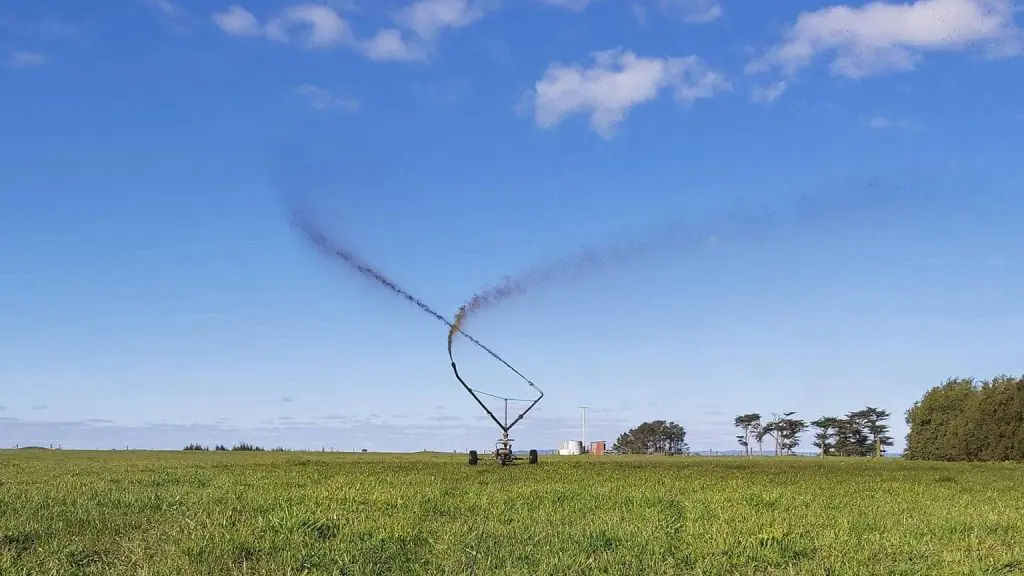
Emptying the Pond
You have several options to choose from, and this is where you will discover what an effluent pump is used for.
Irrigators
With a pumping system at the pond, you can pump through a pipeline to an irrigator. Once set up, this is simple to use and can be automated, allowing it to spread at night as well. The drawback to a travelling irrigator is that it requires a lot of manual handling and takes hours to set up, and blockages are not uncommon. Irrigators are also less precise – it will throw the effluent higher, which creates more volatilisation and makes it difficult to get closer to waterways and boundaries.
Drag Hose Systems
A drag hose system can move the most effluent. A drag hose system can manage 100 to 200 cubic metres an hour. For comparison, a travelling irrigator can only handle 20 cubic metres an hour. It is a system that you can use across multiple farms or irregularly shaped paddocks, allowing you to get the job done quickly and efficiently. The only drawback is that you have a smaller window of opportunity to use a drag hose system. You have to pick your days; the weather conditions have to be right, and if you use it continually in one place, you will oversaturate the paddock.
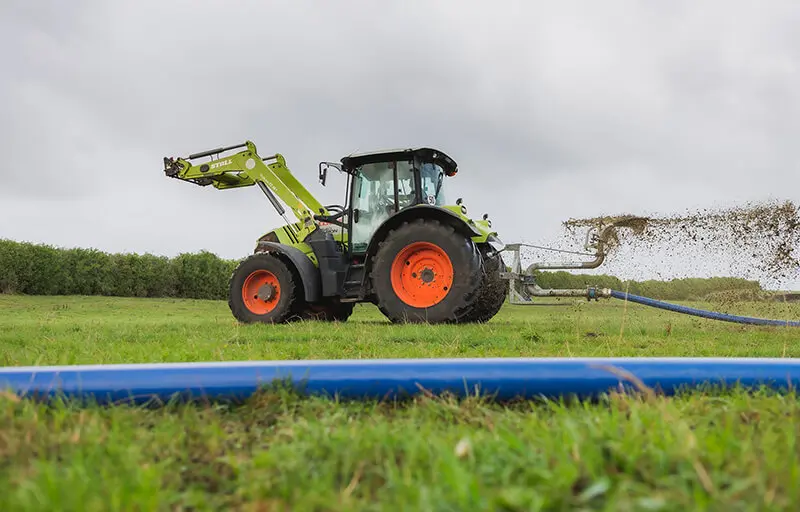
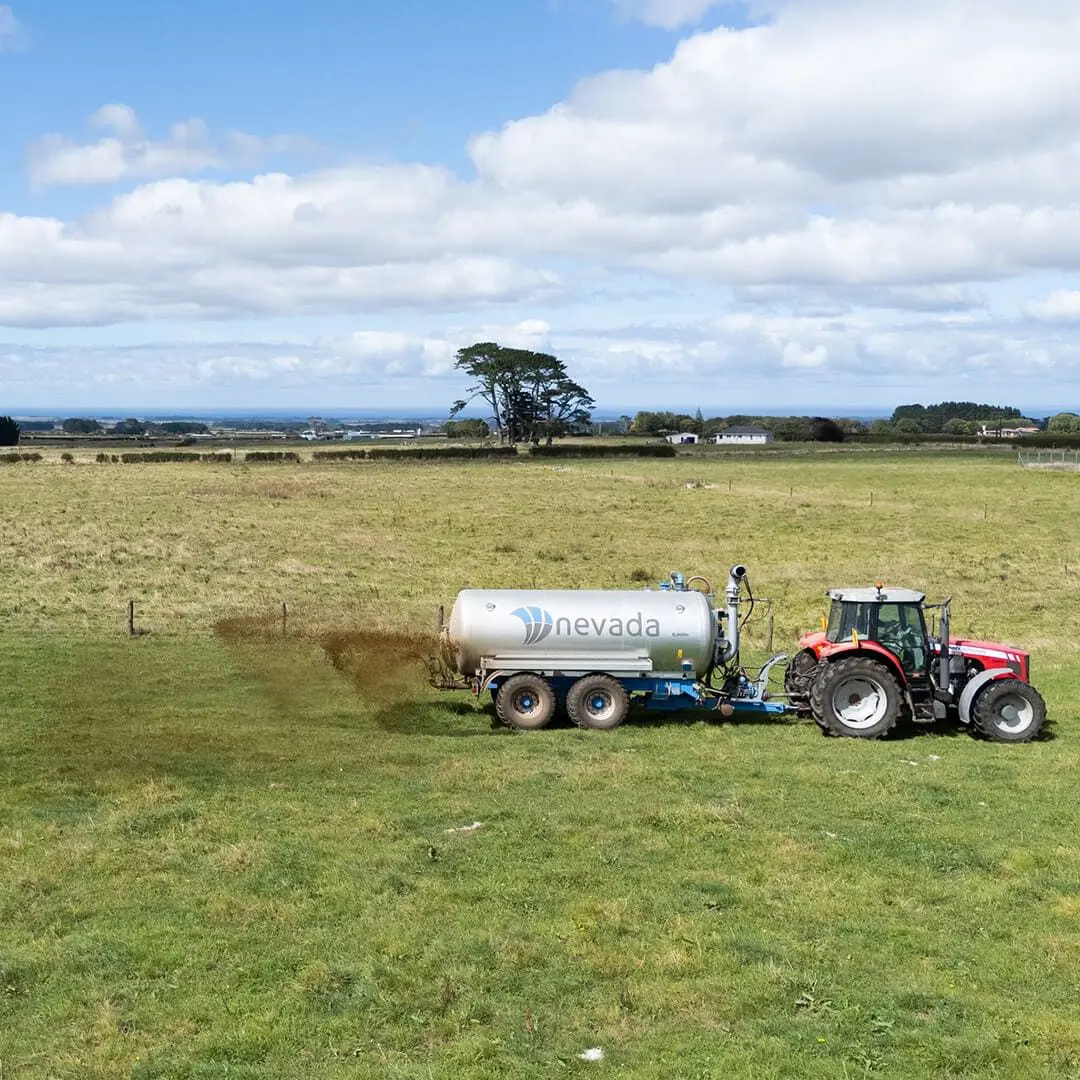
Slurry Tankers
A slurry tanker is your best option if you want to efficiently spread your effluent. Slurry tankers can hold from 6,000 litres to 37,000 litres of effluent. A 12,800-litre tanker takes about three minutes to fill and allows you to reach every corner of your farm, allowing you to get closer to waterways and boundaries. This can save you thousands in fertiliser costs.
The quality of the effluent will quickly diminish. By spreading often, you utilise your effluent when it is at its most nutrient-rich state, and your paddocks receive the greatest benefit.
What is an effluent pump?
An effluent pump is designed to move liquid waste from storage ponds to application areas across your farm. Unlike standard water pumps, effluent pumps are built to handle the abrasive characteristics of farm waste – all the bits and bobs that get swept up from the cowshed and yard, that would quickly destroy conventional pumping equipment.
They must be robust and typically feature hardened impellers, wear-resistant casings, and powerful motors capable of maintaining consistent flow rates even when handling thick, contaminated liquids.
What is an effluent pump used for?
Effluent pumps power your irrigation systems, whether you’re using a drag hose or a travelling irrigator setup. They provide the muscle (pressure and flow) needed to distribute effluent evenly across your paddocks. They also allow you to transfer effluent between ponds for cleaning, remove accumulated solids, and manage water levels during heavy rainfall events.
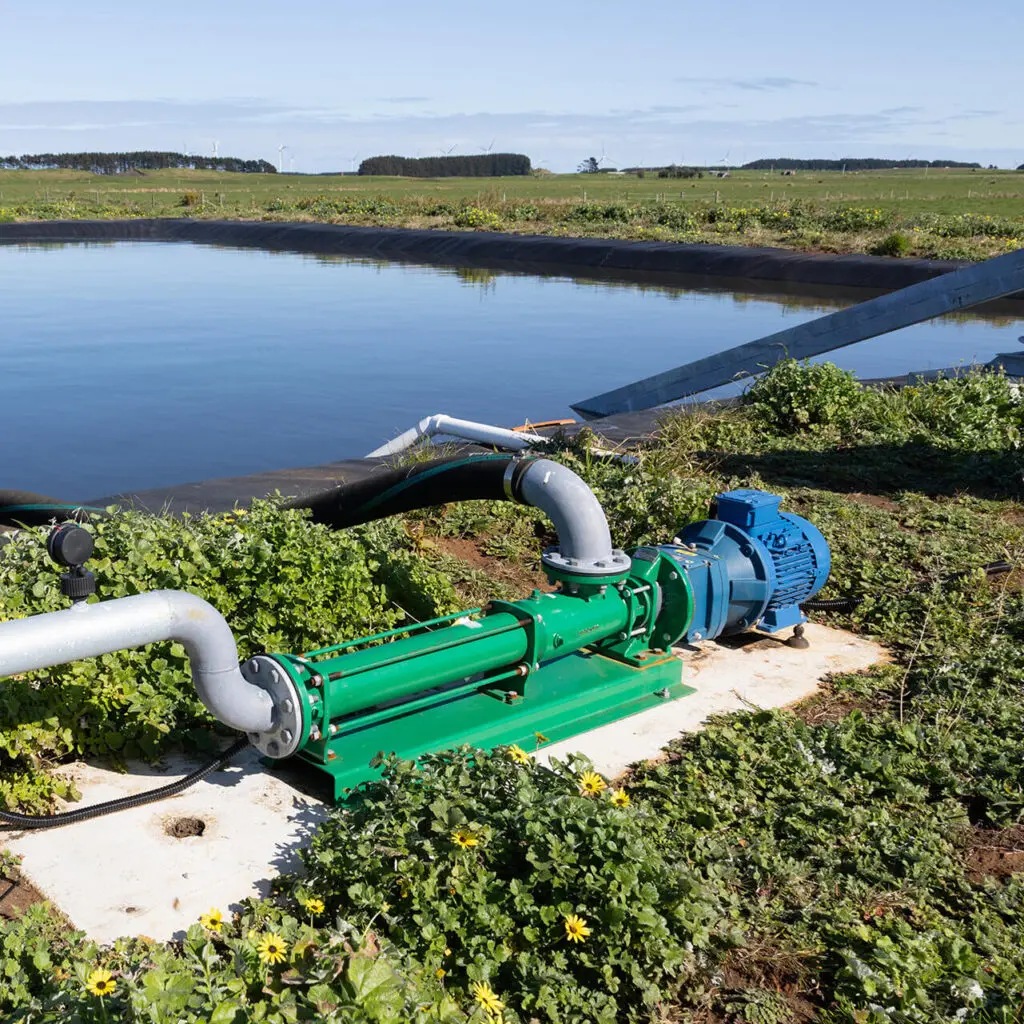
Choosing the Right Effluent Pump for Your Farm
There are three key factors to consider when selecting a pump. Firstly, the specifications of your irrigator vary, as each one has different flow and pressure requirements. Then there’s the elevation – do you need to pump uphill or downhill to your paddocks? Then there is the distance. We’ve written a whole article just about that, with links to handy pressure calculators.
We recommend a progressive cavity (PC) pump for most setups; they are shore-mounted, safer, and easier to service, and can be automated with an intelligent pump controller. You can find a whole discussion about the merits of progressive cavity pumps versus centrifugal pumps here.
Then there is the decision about what to choose, an electric pump or a PTO-powered pump? Electric pumps offer convenience and automation, but the cost of running power to your pond might be prohibitive. That’s not an issue with a PTO powered pump, which will also be more powerful, and you can also run it across multiple farms if you need it. We can help you weigh up the pros and cons of each system.
Common mistakes
Pond capacity problems often develop gradually as solids accumulate, compromising your effective pond volume. To negate that, it is good practice to stir your pond before you spread. You might think you can save a step and go straight to spreading, but you are doing yourself a disservice.
If the effluent is left to its own devices, the solids and liquids will separate. The solids will generally sink to the bottom of the pond, over time, reducing the volume. The top layer of liquid will also have a lower nutrient value. Hiring a contractor to empty the pond and remove the solid buildup will be expensive – a significant portion of the cost of a stirrer. Nevada stirrers are shore-based and use centrifugal force to mix the whole pond. Submersible stirrers only move a fraction of the pond material.
If you are simply discharging effluent onto the nearest paddocks to the dairy, you can end up saturating the ground and causing metabolic problems in your cows. By spreading across the whole farm, you can spread paddocks as the cows are moved. This gives the paddock the maximum time to regenerate.
Choose Nevada for Effluent Pump Solutions
Success in effluent management comes from treating it as an integrated system rather than isolated components. Your effluent pump, pond design, application equipment, and management practices can all work together. This will transform a simple waste product into a valuable resource for your farm. Effluent is a rich nutrient resource that can transform your soil, help you grow grass and ultimately generate more milk production.
If you need assistance with any of these things, please reach out to our sales team. They know their stuff and will be more than happy to help you find the best solution for your farm.
